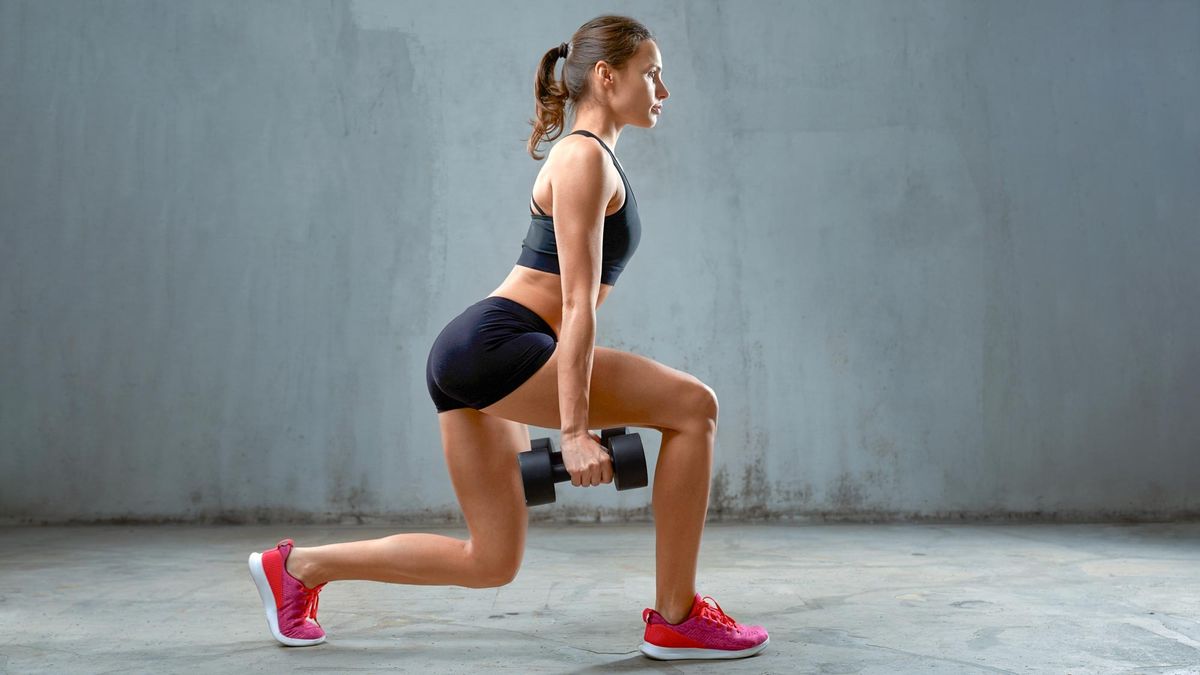Review sản phẩm
5 Bài Tập Sức Mạnh Cứu Sinh Cho Chân Chạy: Tăng Hiệu Suất, Tránh Chấn Thương!
5 Bài Tập Sức Mạnh Cứu Sinh Cho Chân Chạy: Tăng Hiệu Suất, Tránh Chấn Thương!
Chạy bộ là môn thể thao tuyệt vời, nhưng nếu không có nền tảng sức mạnh tốt, bạn dễ bị chấn thương và hiệu suất giảm sút. Bài viết này sẽ chia sẻ 5 bài tập sức mạnh tôi thường xuyên thực hiện để cải thiện quá trình luyện tập và bảo vệ đôi chân khỏi những tổn thương không đáng có. Đây là những bài tập đơn giản, hiệu quả và có thể thực hiện ngay tại nhà hoặc phòng tập.
- Squat (Squat xuống): Bài tập cơ bản nhưng cực kỳ hiệu quả cho việc tăng cường sức mạnh ở phần chân, mông và hông – những nhóm cơ quan trọng trong chạy bộ. Hãy tập trung vào việc giữ đúng tư thế, lưng thẳng, và hạ thấp người xuống cho đến khi đùi song song với mặt đất. Bạn có thể sử dụng tạ hoặc kettlebell để tăng cường độ khó.
-
Lunges (Bước Tấn): Lunges giúp cải thiện sự cân bằng, ổn định và sức mạnh ở chân. Thực hiện bước tấn rộng, giữ lưng thẳng và hạ thấp người xuống cho đến khi đầu gối sau gần chạm đất. Thay đổi chân để thực hiện đều hai bên. Bạn cũng có thể sử dụng tạ tay để tăng cường hiệu quả.
-
Plank (Bài tập ván): Plank không chỉ giúp tăng cường sức mạnh cốt lõi mà còn cải thiện sự ổn định và tư thế khi chạy. Giữ tư thế plank chuẩn, thân thẳng, và giữ trong khoảng thời gian từ 30 giây đến 1 phút. Cố gắng duy trì tư thế đúng để tránh bị cong lưng.
-
Calf Raises (Nhón Gót Chân): Bài tập này tập trung vào cơ bắp chân, giúp cải thiện sức mạnh và khả năng bật nhảy khi chạy. Đứng thẳng, nhón gót chân lên cao nhất có thể rồi từ từ hạ xuống. Bạn có thể thực hiện bài tập này ở nhiều tư thế khác nhau để tăng cường độ khó.
-
Glute Bridges (Nâng Mông): Bài tập này tập trung vào nhóm cơ mông, rất quan trọng cho việc đẩy người về phía trước khi chạy. Nằm ngửa, gập đầu gối và nâng mông lên cao khỏi mặt đất, giữ tư thế trong vài giây rồi từ từ hạ xuống. Bạn có thể đặt tạ trên hông để tăng cường độ khó.
Lời khuyên:
- Hãy bắt đầu với trọng lượng nhẹ và số lần lặp lại ít, sau đó từ từ tăng cường độ khi cơ thể thích nghi.
- Nghe cơ thể của bạn và nghỉ ngơi khi cần thiết.
- Thực hiện các bài tập này đều đặn, ít nhất 2-3 lần/tuần để đạt hiệu quả tốt nhất.
- Tham khảo ý kiến chuyên gia thể hình hoặc huấn luyện viên để được hướng dẫn chính xác và an toàn.
Kết luận:
Việc kết hợp các bài tập sức mạnh vào lịch trình luyện tập chạy bộ là rất quan trọng để cải thiện hiệu suất và phòng tránh chấn thương. Hãy kiên trì và bạn sẽ thấy sự khác biệt đáng kể trong khả năng chạy của mình!
#ChạyBộ #TậpLuận #SứcMạnh #PhòngChấnThương #BàiTậpChạyBộ #Runner #Fitness #ThểDục #SứcKhỏe
(Lưu ý: Phần mua sản phẩm tại Queen Mobile không liên quan đến nội dung bài viết gốc về 5 bài tập. Để bổ sung phần này, cần thêm thông tin cụ thể về sản phẩm liên quan đến chạy bộ được bán tại Queen Mobile.)
Giới thiệu I use these 5 strength exercises for runners to boost my training and avoid injury
: I use these 5 strength exercises for runners to boost my training and avoid injury
Hãy viết lại bài viết dài kèm hashtag về việc đánh giá sản phẩm và mua ngay tại Queen Mobile bằng tiếng VIệt: I use these 5 strength exercises for runners to boost my training and avoid injury
Mua ngay sản phẩm tại Việt Nam:
QUEEN MOBILE chuyên cung cấp điện thoại Iphone, máy tính bảng Ipad, đồng hồ Smartwatch và các phụ kiện APPLE và các giải pháp điện tử và nhà thông minh. Queen Mobile rất hân hạnh được phục vụ quý khách….
Mua #Điện_thoại #iphone #ipad #macbook #samsung #xiaomi #poco #oppo #snapdragon giá tốt, hãy ghé [𝑸𝑼𝑬𝑬𝑵 𝑴𝑶𝑩𝑰𝑳𝑬]
✿ 149 Hòa Bình, phường Hiệp Tân, quận Tân Phú, TP HCM
✿ 402B, Hai Bà Trưng, P Tân Định, Q 1, HCM
✿ 287 đường 3/2 P 10, Q 10, HCM
Hotline (miễn phí) 19003190
Thu cũ đổi mới
Rẻ hơn hoàn tiền
Góp 0%
Thời gian làm việc: 9h – 21h.
KẾT LUẬN
Hãy viết đoạn tóm tắt về nội dung bằng tiếng việt kích thích người mua: I use these 5 strength exercises for runners to boost my training and avoid injury
If you love running but find yourself frequently falling victim to injury and having to frustratedly break from running for prolonged periods, there’s a good chance you are missing an important part of training. No matter how experienced a runner you are, one of the most beneficial ways to avoid running injuries is to strength train.
I’m currently training for a marathon and know how time consuming the running part can be never mind other forms of training. So I’ve put together a list of five exercises that I rely on to prevent injury and enhance my running economy. With the help of run coach Helen Gaunt, you will find a list of helpful strength exercises for runners including how to perform them and where they target.
You don’t need to work with weight but it will help with your strength gains. I try to incorporate a mix of bodyweight, barbell and free weights into my overall training but I especially like to work with kettlebells which you will notice with the exercises below. This is because kettlebell exercises for runners often involve multi-joint movements that mimic the natural movements used in running, such as hip hinges, lunges, and squats.
5 strength exercises for runners to boost performance and avoid injury
resistance band around the legs above the knees to isolate the glutes further.”
I did kettlebell hip marches every day for a week last year and also found this exercise to be an excellent one for strengthening the hip flexors, another very important group of muscles for runners.
3. Dumbbell reverse lunges
- Stand tall with a dumbbell in each hand at your sides. Relax your shoulders and engage your core.
- Step backward with your right foot and try to land on the ball of your foot as you lower your right knee toward the ground. Your left knee should be bent at a 90-degree angle, with your thigh parallel to the ground.
- Press through the heel of your left foot to return to the starting position. Use the muscles in your left leg and glutes to lift yourself back up.
- Perform the desired number of repetitions on one side before switching to the other side.
According to Gaunt a reverse lunge is especially useful for those with knee niggles. “This move also helps with eccentric loading, and targets the glutes, the quads, and hamstrings.”
“Lunges are a useful move to mimic the running action, bringing the knee forwards up and through, whilst moving the opposite arms in a running motion. You will also build single leg strength and stability as you work on your balance with this move.”
5. Step-ups
- Begin by standing in front of a sturdy bench or platform. If you want to perform this exercise with weights, hold either two dumbbells or kettlebells in each hand with your arms hanging at your sides.
- Place your right foot firmly on the center of the bench. Press through your right heel and engage your right glute to lift your body onto the bench.
- Extend your right leg at the top of the movement, straightening your knee without locking it. Your left foot should remain lifted off the ground.
- Lower your body back down to the starting position, tapping your left foot on the ground beside the bench.
- Perform the desired number of repetitions on one leg before switching to the other leg.
Gaunt says step ups are a great move for runners to incorporate into your strength and conditioning routines. She recommends the forward variation as described above for helping to promote a greater knee lift and for building muscle strength and power for speed or hill work.
She also suggests incorporating step downs into your training. “Stepping off the step and back up will help eccentric loading – a key preparation for downhill running.”
“The other variation is side steps off the step, working on one leg at a time moving up and down. This helps to strengthen the hips and improve mobility, making you more robust,” Gaunt explains, “Especially useful for trail running where variation in terrain and direction adds challenges for the body.”
5. Anterior tibialis raises
- Stand with your back against a wall and your feet positioned one to two steps away from the wall.
- Ensure you have a strong foot grip to prevent your feet from sliding away from you.
- Contract and hold the muscles on the fronts of your thighs by drawing your kneecaps up towards your hips.
- Now lean slightly forward from your hips and begin to pull your toes as high as you can towards your shins, and lower them back down again. Repeat.
“Anterior tibialis raises are a simple and powerful knee strengthening exercise and are a useful move to reduce the risk of shin splints,” says Gaunt. Overall, the exercise helps you to build muscle for stronger calves.
Gaunt adds, “Having strong calf muscles and knees, in turn, reduces the risk of niggles referring up the kinetic chain for example, in the sciatic nerves along the hamstrings, or issues further up in the hips, back and shoulders.”
More from Tom’s Guide
https://platform.instagram.com/en_US/embeds.js
Xem chi tiết và đăng ký
Khám phá thêm từ Phụ Kiện Đỉnh
Đăng ký để nhận các bài đăng mới nhất được gửi đến email của bạn.





